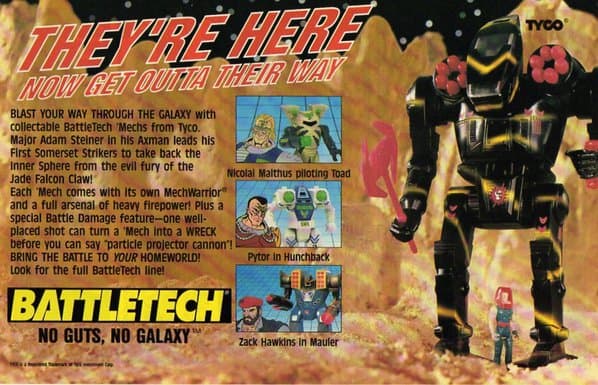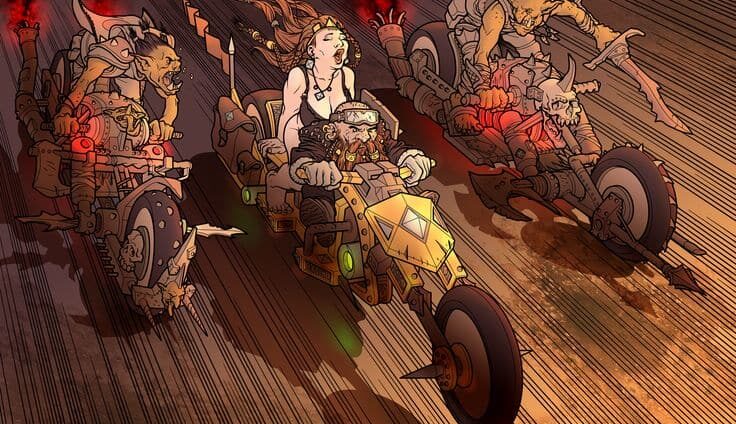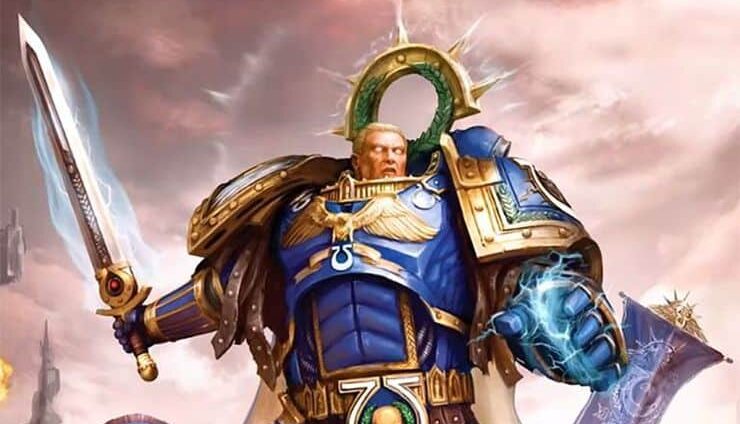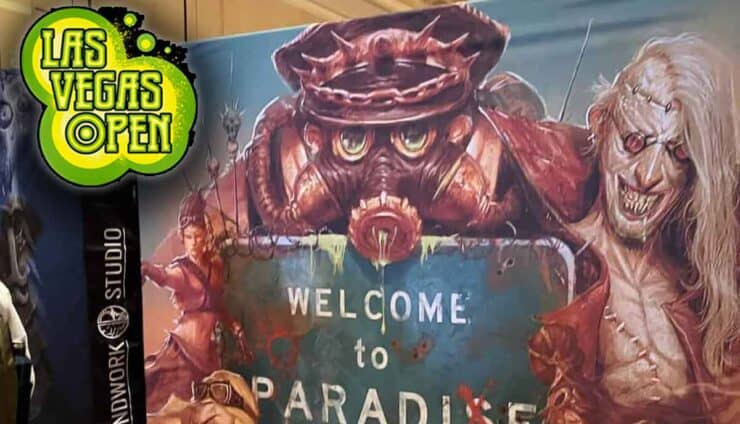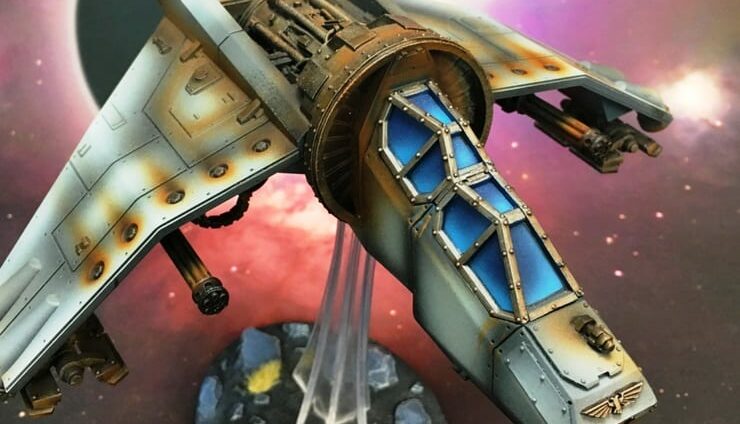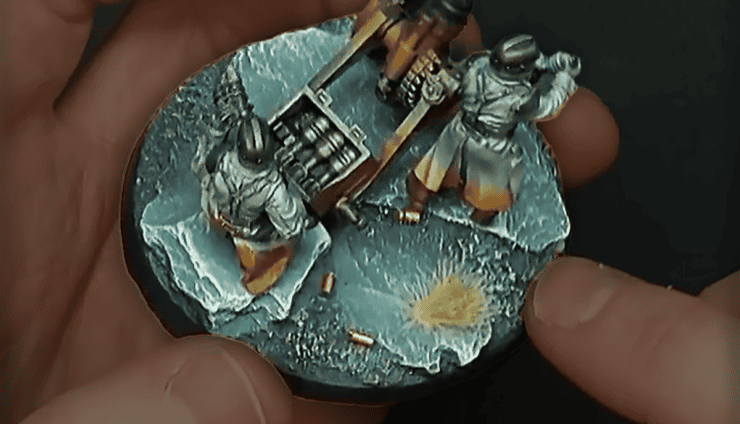 Hey Game Fans, we’re back with more on how units interact during the Combat Phase. Today we’re finishing up with one of my favorite parts of the game.
Hey Game Fans, we’re back with more on how units interact during the Combat Phase. Today we’re finishing up with one of my favorite parts of the game.
Whether Kicking, Punching, Charging, or swinging a tree branch like a club, Physical Attacks are a hallmark of Battletech and Alpha Strike. Let’s take a closer look and see if we can figure out how to stomp things to pieces with our giant robots.
Physical Attacks
Physical attacks allow combat units to deal damage to each other without using onboard weapons.
Resolving Physical Attacks
-
Determine Physical Attack Type
- There are four different kinds of physical attacks in Alpha Strike, and each one deals different amounts of damage and has different modifiers to hit. They are as follows:
- Standard Physical Attack. The Target needs to be within 1 inch of the attacker and within the attacker’s firing arc. This is your typical punch or kick.
- Melee Physical Attack. Only units with the MEL special ability can use this option. The target needs to be within 2 inches of the attacker, and in the attacker’s firing arc. This is a club/hatchet/sword or other dedicated melee weapon attack.
- Special Physical Attacks. Charges and Death From Above Attacks are riskier than other physical attacks. Only one of these attacks can be declared on a target per turn. These can only be completed against targets that have all ready completed their move/or are stationary. The Attacker must make base to base contact with the target.
- Anti-Mech Infantry Attacks. Units trained with the Anti-Mech (AM) special ability can perform a special attack against ground units or grounded aerospace units. They have to be in base to base contact to perform this attack.
- There are four different kinds of physical attacks in Alpha Strike, and each one deals different amounts of damage and has different modifiers to hit. They are as follows:
-
Determine To-Hit Number
- The Base To-Hit Number is the Unit’s Skill Rating. Modifiers to this include:
- The Physical Attack form chosen.
- Terrain modifiers.
- The target’s movement modifier.
- Miscellaneous modifiers occasionally crop up.
- All Modifiers are cumulative, so add them up to determine the final To-Hit Number.
- Shutdown units have no Target Movement Modifier.
- The Base To-Hit Number is the Unit’s Skill Rating. Modifiers to this include:
-
Roll To Hit
- Roll 2D6 and compare the dice roll to the To-Hit number generated in the step above. If the dice result exceeds the To-Hit Number, the attack hits. If the dice result is less than the To-Hit Number, the attack fails.
-
Determine and Apply Damage
- Units deal damage from physical attacks based on their size. Units with the Melee Special Ability deal an extra point of damage. There are some special cases.
- Protomechs: Protomechs deal 1 point of damage regardless of other damage values
- Anti-Mech Infantry: Anti-Mech Infantry triggers a critical hit on a successful attack even if the target has armor bubbles remaining.
- Charge Attacks: Charge Attacks rely on speed and momentum to deal increased damage. The Charging Unit deals damage based on the distance it moved during the movement phase and it’s size. The Formula for this is Distance travelled divided by 2, multiplied by the value on the charge table on page 43.
- The Charger moves 12 inches during the movement phase to make contact with a Centurion as part of a Charge attack. it succeeds at the charge, and deals (12 divided by 2= 6, multiplied by 1 for the size of the Charger) 6 points of damage to the Centurion. Since the Centurion is Size 2, it doesn’t take a point of damage for completing the Charge. Had it charged a heavier unit, it would have taken a point of damage.
- Death From Above Attacks: Death from Above works like a charge, but the attacker has to have Jump Movement. If it hits, the attacker deals an extra point of damage, but suffers damage equal to its size. If the attack fails, the unit executing the DFA suffers damage equal to its size +1.
- Units deal damage from physical attacks based on their size. Units with the Melee Special Ability deal an extra point of damage. There are some special cases.
-
Determine Critical Hits
- Determine critical hits normally (see our article from last week about it) with two exceptions.
Overheating
Some units can push the limits of their systems to deal more damage. Doing so generates excess heat, and this degrades combat effectiveness until the excess heat bleeds off.
-
Using Overheat
- When a player declares an attack, they can declare they are using their Overheat Value, and how much of that value they are using (any amount from 0 to the maximum OV). If the attack hits, the OV is added to the damage value at Short and Medium Range (the OVL special ability allows the unit to add this value at long range). For each point of OV used, increase the unit’s heat scale accordingly (Units standing in water reduce this heat build up by one point). Some special cases apply:
- Special Ability damage is not increased by OV.
- Physical attack damage is not increased by OV.
- A Unit cannot overheat more than it’s heat scale will allow.
- When a player declares an attack, they can declare they are using their Overheat Value, and how much of that value they are using (any amount from 0 to the maximum OV). If the attack hits, the OV is added to the damage value at Short and Medium Range (the OVL special ability allows the unit to add this value at long range). For each point of OV used, increase the unit’s heat scale accordingly (Units standing in water reduce this heat build up by one point). Some special cases apply:
Once you’ve declared and resolved all of your attacks (Physical and Weapon), you apply the damage and your opponent gets to take their turn resolving all of their attacks. Once both players have completed this step, it’s time to move on to the End Phase.Now, this may seem like a lot of steps to keep track of, and a lot of moving parts. Practice it with smaller games and study up on the rules and you’ll be flying through the Combat Phase in no time. That’s it for our review of the Combat Phase, and we’ll finish up next week with the End Phase.
Again, we’re borrowing art from the wonderful Anthony Scroggins (Shimmering Sword).


